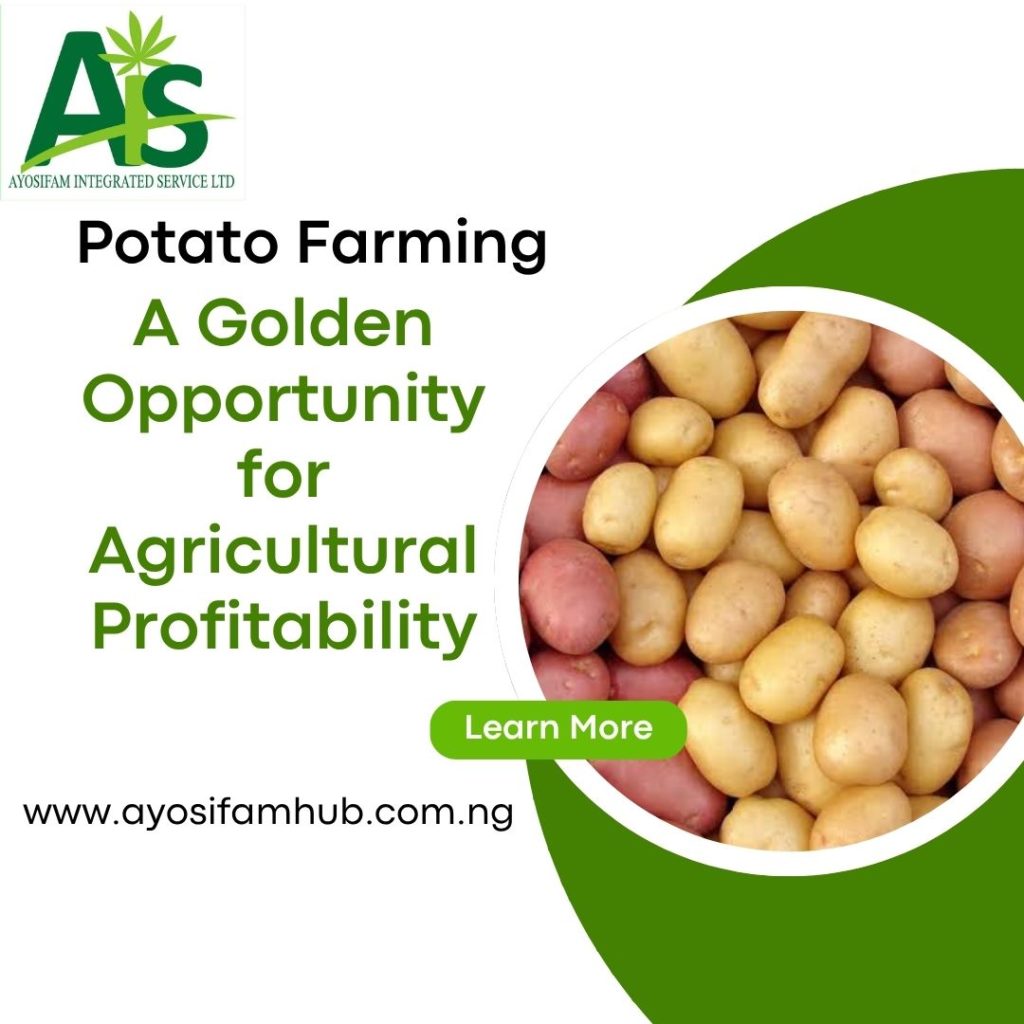
In the vast and diverse world of agriculture, few crops offer the consistent profitability and widespread demand that potatoes do. Far from being a mere staple, the humble potato has evolved into a versatile and highly sought-after commodity, making its cultivation a remarkably lucrative venture for farmers worldwide. From its adaptability to its diverse market applications, here’s a closer look at why potato farming stands out as a golden opportunity for agricultural profitability.
1.High Demand and Versatile Market
One of the primary drivers of potato farming’s profitability is the unyielding global demand for the crop. Potatoes are a fundamental part of diets across continents, consumed in various forms: fresh, processed (chips, fries, flakes, starch), and even as an ingredient in numerous food products. This sustained and widespread demand ensures a ready market for farmers, reducing the risk of oversupply and price volatility. The sheer versatility of the potato means it can cater to a wide array of consumer preferences, from the simplest home-cooked meal to industrial-scale food production.
2.Adaptability and Wide Growing Regions
Potatoes are remarkably adaptable and can thrive in a diverse range of climatic conditions and soil types. While optimal growth requires specific conditions, modern agricultural techniques and the availability of various potato varieties allow cultivation in many parts of the world, from temperate zones to higher altitudes in tropical regions. This widespread adaptability expands the potential farming areas, making it accessible to a larger number of agriculturalists and reducing geographical limitations that might plague other crops.
3.Relatively Short Growing Cycle and High Yields
Compared to many other staple crops, potatoes boast a relatively short growing cycle, typically ranging from 90 to 120 days depending on the variety and climate. This allows for multiple harvests in a single year in certain regions, significantly increasing overall productivity and income. Furthermore, potatoes are known for their high yield potential per unit area. With proper management, a single acre can produce substantial quantities of potatoes, leading to impressive returns on investment.
4.Value Addition and Processing Opportunities
The profitability of potato farming extends beyond selling fresh produce. The robust processing industry for potatoes offers significant opportunities for value addition. Farmers can choose to sell their harvest directly to processing plants for chips, fries, or starch production, often securing higher prices than the fresh market. This diversification of income streams can buffer farmers against market fluctuations and open doors to more stable and long-term contracts with processors.
5.Storability and Reduced Post-Harvest Losses
When harvested and stored correctly, potatoes have excellent storability compared to many other perishable crops. This extended shelf life allows farmers greater flexibility in marketing their produce, enabling them to hold onto their harvest until market prices are more favorable. Modern storage facilities, including controlled-atmosphere storage, further minimize post-harvest losses, preserving the quality and quantity of the potatoes and ultimately maximizing profitability.
6.Technological Advancements and Improved Efficiency
Continuous advancements in agricultural technology have further boosted the profitability of potato farming. From improved potato varieties resistant to diseases and pests to precision farming techniques, automated planting and harvesting machinery, and advanced irrigation systems, these innovations enhance efficiency, reduce labour costs, and increase yields, ultimately contributing to higher profit margins for farmers.
7.Government Support and Research
Many governments and agricultural organizations recognize the importance of potato production for food security and economic stability. As such, farmers often benefit from various forms of support, including subsidies, research and development initiatives for new varieties and disease control, and training programs. This support can significantly de-risk potato farming and enhance its profitability.
Conclusion
Potato farming, when approached with sound agricultural practices and a keen understanding of market dynamics, presents a compelling case for profitability. Its high demand, adaptability, short growing cycle, diverse market applications, and opportunities for value addition make it an attractive venture for both smallholder farmers and large-scale agricultural enterprises. As global food consumption continues to rise, the potato’s position as a cornerstone of the world’s diet ensures that its cultivation will remain a fertile ground for agricultural success and sustainable income.



